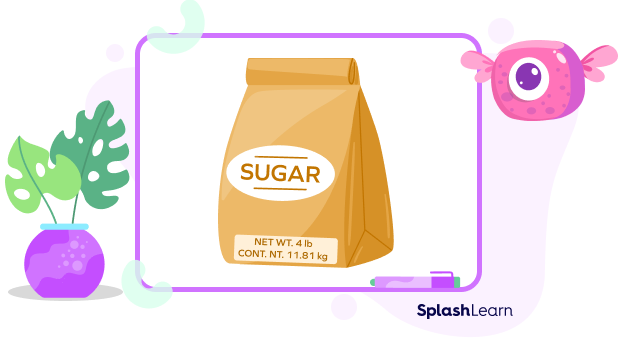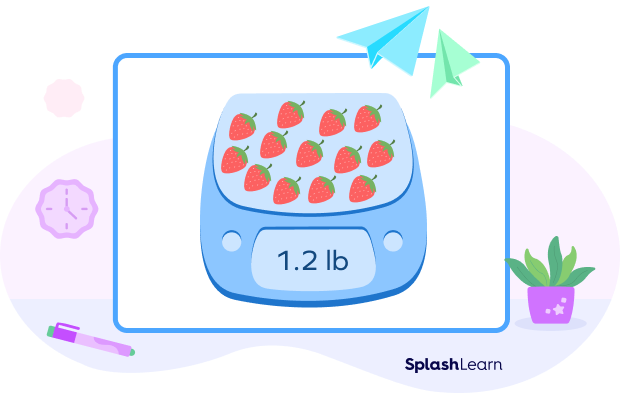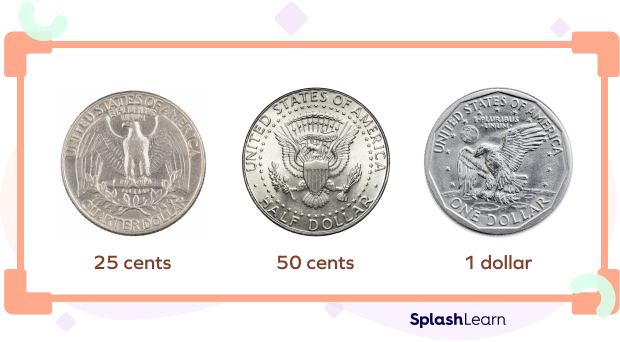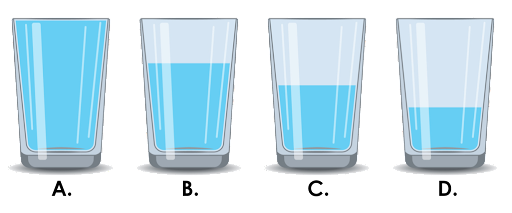What Is a Quantity in Math?
Quantity describes an amount or a number of something. It is the measurement of something by saying how much of it there is. It is an aspect or property of an object which can be measured.
A quantity is a measurable property of an object. Usually, it is the product of a number (magnitude) and a unit, e.g. 35 lb.
We talk about quantity in terms of an amount or the total number of items or simply the size or extent of something that is measurable. It answers the questions like “how much” or “how many” of something is present. We can compare quantities as “more,” “less,” or “equal.”
The abbreviation for quantity is “qty.”
Examples: volume, mass, length, people, number, (x + y), area, etc
We refer to quantity in many day-to-day situations.
- The quantity of milk required is mentioned in the recipe.
- Is the quantity of food sufficient for the party?
- The quantity of oil used is too less.
- How much coffee did you have? A cup of coffee!
- How many eggs are in the box? A dozen eggs!

Quantity in Math: Definition
In math, the definition of quantity can be given as anything that can be counted or measured. Quantity is a generic term used to express the measurement (count or amount). It is an amount that you can measure.
Quantities in Algebra
What does quantity mean in algebra? An expression as one whole represents a quantity.
We can read (x + 9)2 as “x plus 9, the quantity squared.”
In a math equation, a quantity is any number or variable and any algebraic combination of other quantities. Thus, something on which some mathematical operation can be performed is also referred to as “quantity.”
In algebra, quantities are usually represented by variables, and they can be unknown or vary in value.
We can write expressions or equations involving an unknown as follows:
- five times the quantity = 4x
- the quantity of x plus three = x + 3
Quantities in Geometry
The quality of something that makes it measurable is quantity. Example: length, area, volume, height, etc.
One important point to be remembered is that we cannot compare quantities that have different dimensions. For example, a square of side length of 2 inches will have an area of 4 inch2. Here, we cannot compare the side of 2 inches and the area of 4 inch2 as both quantities depict different aspects of the square.
Also, we cannot compare two quantities having different units. We first need to convert them into the same unit.
Quantities in Physics
Physical quantities are properties of objects that can be quantified or anything that can be given a magnitude or a value. There are two types of physical quantities.
Base quantity: Base quantities are physical quantities that cannot be defined in terms of other base quantities. In simple words, they are independent quantities.
Examples: length, mass, time, temperature, etc.
Derived quantity: As the name suggests, derived quantities are “derived” from the base quantities. They are dependent on the base quantities.
Examples: Speed $= \frac{Distance}{Time}$ , Area, Volume
Uses of Quantity
- Expressions of quantity show how many or how much of something there is. Quantity is used everywhere, in mathematics, science, and even in real life.
- We use quantity to define mathematical properties and relations using numbers or variables.
- In real life, we use the concept of quantity while counting the number of things you bought when you go shopping or when you are stating your age (Yes, your age is also a quantity!).
- In mathematics, we use quantities in equations. It can be used to describe a whole expression, unknown value in an equation, or individual terms.
Quantity in Day-to-day Life
We use the concept of quantities in daily life without even realizing it. Whenever we express how much of something is present (in a container, in a box), we use the term “quantity.”
Let’s see a few examples of quantity in daily life.
Example 1: What is the quantity of sugar in the given packet?
It is 4 lb or 1.8 kg.

Example 2: What is the quantity of strawberries shown in the image?
We can express the quantity in two ways here.
We can say “13 strawberries.”
We can express it in terms of weight and say “1.2 lb.”

Example 3: What is the quantity of money shown in the image?
1 dollar + 50 cents + 25 cents = $\$1.75$

Facts about Quantity
- The quantities that do not depend on each other are called fundamental quantities. The units defined for such quantities are known as fundamental units. These quantities are also called base quantities.
- The seven fundamental quantities and their S.I. units are as follows:
1. Length (meter)
2. Mass (kilogram)
3. Time (second)
4. Electric current (ampere)
5. Thermodynamic temperature (kelvin)
6. Amount of substance (mole)
7. Luminous intensity (candela)
Conclusion
In this article, we learned about quantity and its significance in measuring and quantifying objects or values. Understanding quantity is fundamental in various fields, from mathematics to science and everyday life. To reinforce our knowledge, let’s solve a few examples and practice MCQs for better comprehension.
Solved Examples on Quantity in Math
1. Write an equation for the following and calculate the quantity for x = 2.
- Two times the quantity of x minus three.
- Three times the quantity of x plus two minus twice the quantity of x.
- The quantity of x minus five times x plus two and the quantity squared
Solution:
A. Two times the quantity of x minus three
We can write this as 2x – 3.
Let’s find the quantity 2x – 3 at x = 2.
2(2) – 3 = 4 – 3 = 1
B. Three times the quantity of x plus two minus twice the quantity of x. We can write this as 3x + 2 – 2x.
Let’s find the value at x = 2
3(2) + 2 – 2(2)
= 6 + 2 – 4
= 4
C. The quantity of x minus five times x plus two and the quantity squared
We can write this as (x – 5x + 2)2
At x = 2, we get
(2 – 5(2) + 2)2 = (10)2 = 100
2. A company purchased 3500 storage boxes from company X and 2000 boxes from company Y. What is the total quantity of boxes the company purchased?
Solution:
The quantity of boxes = Number of boxes purchased from company X + Number of boxes purchased from company Y
=3500 + 2000
=5500
3. Jason took out 50 ml of milk from a carton holding a liter of milk to use in the recipe for a cake. How many more cakes can be made from the remaining milk?
Solution:
One liter contains 1000 ml.
So, after taking out 50 ml milk, the remaining milk will be 1000 ml – 50 ml= 950 ml
Number of cakes = 950 ml/50ml=19 cakes
4. Find the quantity of z in the following equation if x = 5 and y = 4: z = ((3x – 10 )(2y))2
Solution: z=[(3(5) – 10)(2(4))]2
z =((15 – 10)(8))2
z =(5 $\times$ 8)2
z = 402
z = 1600
5. Find the perimeter and area of a square with sides of 3 inches. Can we compare these quantities?
Solution:
Perimeter of square = 4 $\times$ side of square = 4 $\times$ 3=12 inches.
Area of square = (side)2 = 32 = 9 inch2
These two quantities cannot be compared as the units are different.
Practice Problems on Quantity in Math
What Is Quantity? Definition with Examples
Alex’s father brought one pound of apples while his mother brought 2 pounds of oranges. What quantity of fruits does he get when his parents come home?
Quantity of fruits = 1 pound + 2 pounds
= 3 pounds
What is the quantity of p if q = 4 and r = 9?
$p = (4r + 3q \;-\; 40)^{2}$
Since q = 4 and r = 9, putting it in the equation, we will get:
$p = (4(9) + 3(4) \;-\; 40)^{2}$
$p = (36 + 12 \;-\; 40)^{2}$
$p = (8)^{2}$
p = 64
The ______ has half a glass of water.

The glass C is half filled with water.
Frequently Asked Questions about Quantity in Math
What is quantity in a math equation?
In a math equation, a quantity is any number or variable and any algebraic combination of other quantities. In the equation x + 6 = 10, there are four quantities represented: 6, 10, x, and the sum of x and 7, x + 7.
What is the unit of a physical quantity?
A unit is a standard for the measurement of physical quantities of the same kind. It described the magnitude of the quantity. Any physical quantity is expressed using a numerical value and a unit. Example: length = 35 feet
What do you mean by magnitude in the concept of quantity?
Magnitude is the numerical value of how much/many unit(s) of something is present in a system. It is a mathematical term that is used in concepts such as vectors and geometry to give them an amount of quantity.
What are scalar and vector quantities?
Scalar quantity is defined as when a physical quantity has some magnitude but no direction.
Example: Mass, Distance
Vector quantities are quantities with both magnitude and direction.
Example: Speed
What is the meaning of quantity in math?
Quantity in math refers to the amount, number, or measure of something.
















